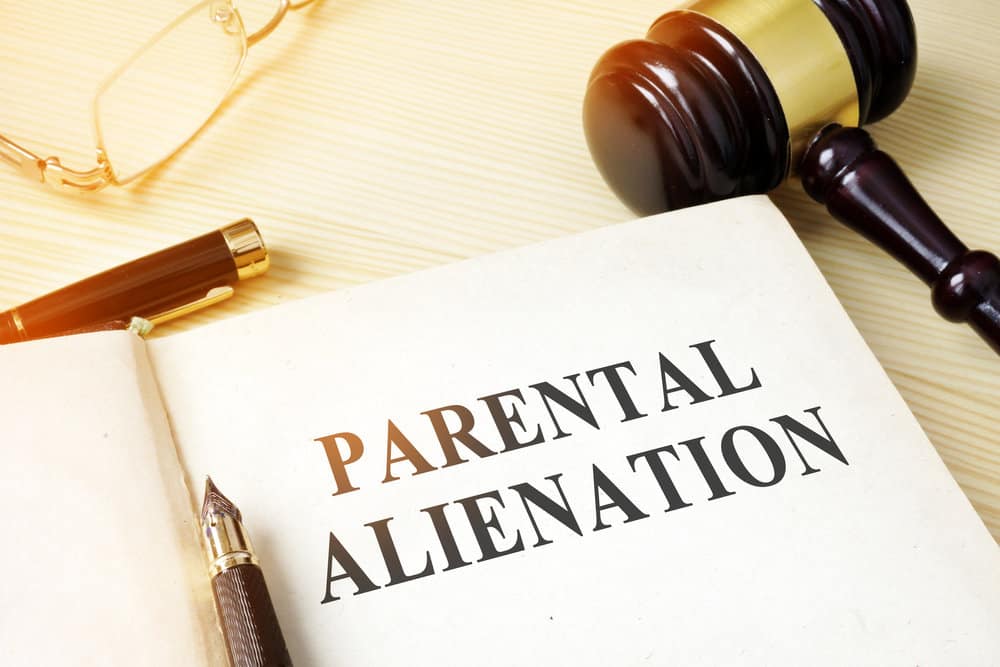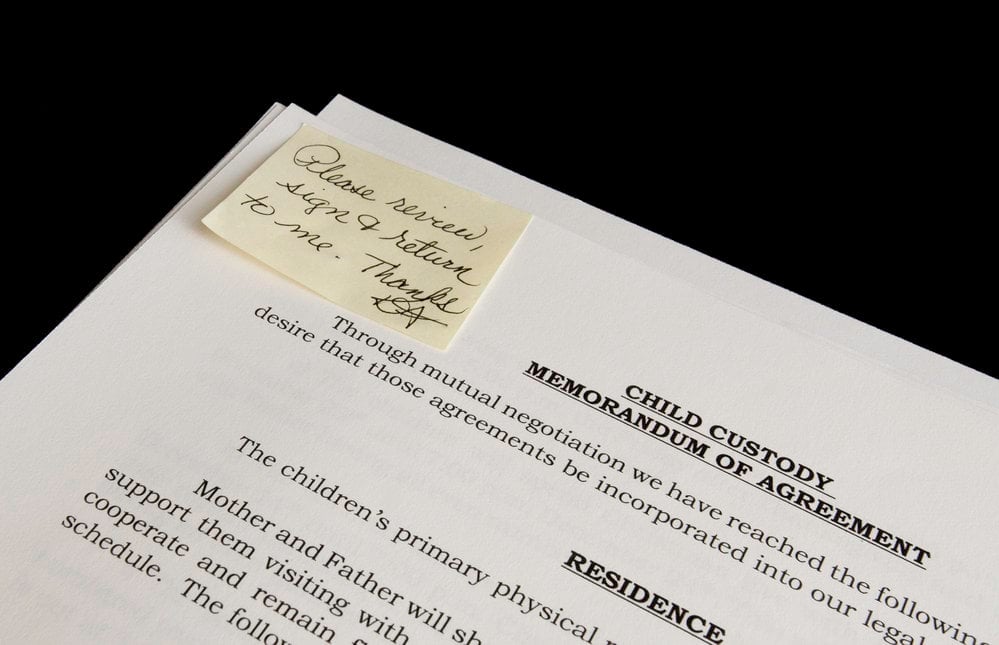Parental Alienation Syndrome (PAS) is a complex and emotionally charged issue that can impact children’s and families’ mental and emotional well-being when experiencing high-conflict separation or divorce. At its core, PAS occurs when one parent intentionally manipulates a child’s perception of the other parent negatively, leading to the child’s alienation or rejection of the targeted parent. This damaging phenomenon can have long-lasting effects on the family dynamics and the development and well-being of the child.
Understanding the signs and symptoms of PAS can be difficult, as they can vary depending on the manipulating parent’s techniques and the child’s reaction to the alienation process. However, awareness of the red flags can help increase awareness and prompt intervention when necessary. This article will delve into the key aspects of Parental Alienation Syndrome, including its causes, contributing factors, manipulation techniques, and legal consequences, as well as the therapeutic approaches available for addressing the issue and strategies for prevention and coping.
Key Takeaways
- Parental Alienation Syndrome is a harmful family dynamic during high-conflict separation or divorce, with long-lasting effects on children and families.
- Recognizing the signs and symptoms of PAS is essential for timely intervention and proper support.
- Therapeutic approaches and prevention strategies can help affected families cope with and overcome the challenges posed by PAS.

Understanding Parental Alienation Syndrome
Parental Alienation Syndrome (PAS) is a complex and heart-wrenching issue many families face. It occurs when one parent intentionally manipulates their child or children to reject and harbor negative feelings towards the other parent. This alienation can be subtle or overt, but regardless of the method, it creates a rift between the child and the targeted parent.
In many cases, PAS arises when parents are engaged in a bitter separation or custody battle. High emotions and an inclination for revenge can fuel one parent’s determination to sabotage the other’s relationship with their child. Sadly, the children suffer the most in these scenarios, as they are torn between their loyalty to both parents.
When dealing with PAS, it’s essential to recognize the signs and symptoms. Parental alienation manifests in various ways, including constant criticism of the targeted parent, exaggerated stories of their actions, and even, in extreme cases, false allegations of abuse. This behavior can make children anxious, confused, and pressured to choose sides.
Witnessing the erosion of your relationship with your child can be incredibly painful. But, knowing what to look for can empower the targeted parent to take action. Some key indicators of PAS include:
- Unfounded anger or rejection of the targeted parent
- Denying or downplaying the memories of positive experiences with the targeted parent
- Unwarranted guilt or blame placed on the targeted parent
- A sudden change in communication patterns
- Children parroting the alienating parent’s language
Addressing PAS can be a delicate and drawn-out process. The targeted parent mustn’t retaliate or allow their emotions to escalate further. Seeking professional help from therapists or family counselors can be invaluable in unraveling the tangled emotions involved. In some cases, legal intervention may be necessary to rectify the situation and protect the child and the parent from further harm.
Remember, your child’s well-being should always be at the forefront of any decisions. Responding to PAS thoughtfully and measuredly can increase the chances of repairing and preserving the precious bond between parent and child.
Signs and Symptoms
Parental Alienation Syndrome (PAS) can be difficult to identify, but some specific signs and symptoms can help you recognize it. These indicators often manifest in the alienating parent and the child being alienated.
One of the most telling signs is a sudden change in the child’s behavior towards the targeted parent. They may show unjustified hostility or feel an inexplicable aversion towards the parent they used to love and share moments with. It’s not uncommon for the child to actively reject the targeted parent, making hurtful statements and providing little or no explanation for their actions.
In addition, the child may exhibit a lack of ambivalence regarding the alienating parent. This means they idealize their favored parent and have no conflicting or mixed emotions when it comes to them. Conversely, they might struggle to identify any positives about the targeted parent and may consistently criticize them.
The alienating parent, on the other hand, may demonstrate signs such as:
- Actively sabotaging the targeted parent’s relationship with the child
- Encouraging or supporting the child’s negative feelings toward the targeted parent
- Undermining the targeted parent’s authority
- Manipulating the child by providing misleading or false information about the targeted parent
To better identify Parental Alienation Syndrome, here are some common symptoms that a child might exhibit:
- Denigration: The child engages in constant criticism or unprovoked attacks against the targeted parent.
- Frivolous rationalizations: The reasons given by the child for their rejection of the targeted parent are irrational or insignificant.
- Lack of guilt: The child feels no remorse or guilt for their behavior towards the targeted parent.
- Reflexive support: The child unquestionably supports the alienating parent and their views, regardless of the circumstances.
While recognizing PAS-related signs and symptoms is crucial, it’s equally important to understand the gravity of this issue. With time, the child affected by PAS may become emotionally estranged from the targeted parent, potentially depriving them of the love, affection, and support that both parents can provide. Acting on these symptoms and seeking professional help can be instrumental in restoring the broken bond and fostering a healthier family dynamic.
Causes and Contributing Factors
Parental alienation syndrome, a term coined by Dr. Richard Gardner, is troubling when one parent intentionally manipulates their child to distance them from the other. Various factors can lead to this scenario, and understanding these causes can help parents and professionals address the issue more effectively.
Divorce and separation are often catalysts for parental alienation. In the heat of a messy breakup, emotions run high, and an alienating parent may use their child as a pawn to gain control or revenge over their former partner. This cruel behavior may drive a wedge between the child and the targeted parent and inflict emotional and psychological harm on the child.
Mental health issues can also contribute to parental alienation syndrome. It is worth noting that while mental health disorders may be a contributing factor, they are not the sole cause of alienation.
Physical or psychological abuse is another underlying factor in many cases of parental alienation. The alienating parent may use instances of abuse, either real or fabricated, to garner sympathy from others and turn the child against the targeted parent. This manipulation can leave the child feeling confused and fearful of the parent they once loved and trusted.
It’s important to consider the influence of the child’s age and developmental stage in these contributing factors. Younger children may be more susceptible to manipulation, while teenagers may be more aware of the situation and potentially resist the alienating parent’s influence.
In conclusion, a tangled web of emotions, circumstances, and mental health disorders can breed an environment ripe for parental alienation syndrome to take root. Each case is uniquely complex, and understanding the underlying causes helps pave the way for families to seek appropriate intervention and support. Remember that every situation is different, and the causes and contributing factors may vary from one family to another. So, when confronted with parental alienation, it’s crucial to approach each case with empathy, insight, and an open mind.

Effect on Alienated Children
Parental alienation is a heartbreaking phenomenon that can have lasting effects on children. When a child is subjected to constant parental brainwashing, it significantly impacts their mental health and emotional well-being. Mental health professionals have observed various consequences arising from this situation, some more serious than others.
Alienated children tend to feel a sense of trauma, often not realizing the manipulative tactics employed by one parent to turn them against the other. This emotional distress can breed feelings of confusion, guilt, and resentment. The child is caught in a bitter conflict, torn between their love for both parents and the lies they’ve been told.
The emotional turmoil these children face can manifest in a variety of ways. Some may develop a deep sense of neglect, feeling abandoned by the parent they’ve been taught to despise. Others may retreat into a shell, struggling to form close relationships and trust others. It’s not uncommon for children facing parental alienation to experience anxiety, depression, or other mental health challenges as they grapple with their perceived reality.
As difficult as it may be, mental health professionals, educators, and family members must recognize the signs of parental alienation and intervene when necessary. By providing a neutral, compassionate, and clear-headed perspective, these individuals can help counteract the damaging effects of alienation and guide the child toward reconciling their fragmented emotions and relationships.
It’s important to remember that every case of parental alienation is unique, and each child may respond differently to the support they receive. Nonetheless, acknowledging and addressing the issue is crucial to healing and rebuilding the parent-child bond shattered by this devastating syndrome.
Manipulation Techniques
Parental alienation syndrome is a complex, multi-faceted issue where one parent, the alienator, uses various manipulation techniques to brainwash the child against the other parent. These techniques can be subtle or overt, often involving false information and allegations.
One common manipulation method is spreading false allegations against the other parent. By painting their co-parent in an unflattering light, the alienator aims to damage the child’s relationship with that parent. They might tell the child about supposed misbehavior or past mistakes, embellishing or fabricating details as needed. The child, who trusts the alienator, may begin to adopt these negative perceptions, leading to an estrangement between them and the targeted parent.
Another technique is the purposeful withholding of communication and contact. The alienator might prevent the child from speaking to the other parent on the phone, block the other parent’s calls, or deny requests for visitation. In some cases, they might go as far as moving to a new location, making it logistically challenging or impossible for the targeted parent to maintain a relationship with their child.
In tandem with false allegations and contact obstruction, the alienator may subtly manipulate the child’s emotions. They might portray themselves as the “good” parent while characterizing the other parent as irresponsible, unsupportive, or unloving. This emotional manipulation can foster feelings of loyalty to the alienator and encourage the child to develop an increasingly negative attitude toward the other parent.
Lastly, it’s important to note that not all manipulation techniques are direct or visible. Some alienators operate insidiously, planting seeds of doubt in the child’s mind or using underhanded methods. These include disparaging remarks made in passing, sarcastic comments, or even an unexplained disapproving look when the other parent is mentioned. Over time, such tactics can gradually erode the child’s trust and closeness with the targeted parent.
In sum, the many methods adopted by the alienator in parental alienation syndrome are all designed to manipulate the child’s perceptions and feelings towards the other parent. Recognizing these techniques is an important step towards effectively addressing this troubling issue and working towards a healthier family dynamic.

Consequences for Families
Parental alienation syndrome can profoundly impact families, creating permanent rifts and lasting emotional scars. Often, families are torn apart as the alienating parent systematically drives a wedge between the estranged parent and their children.
One of the primary consequences of this phenomenon is the severe estrangement of the targeted parent from their children. This can be devastating for the parent being pushed away, leading to deep feelings of hurt, betrayal, and isolation. They may find it difficult to move on and develop healthy relationships with others and struggle with self-esteem.
Co-parenting in such a toxic environment becomes nearly impossible. The alienating parent constantly interferes with the targeted parent’s efforts to bond and communicate with their children. This interference can manifest in numerous ways, such as preventing the children from talking to the other parent, manipulating the children’s thoughts and feelings about the other parent through lies and distortions, or even outright denying visitation or custody rights.
The consequences for the children involved can be severe and life-long. They may struggle with forming healthy relationships and find themselves at a higher risk for anxiety, depression, and low self-esteem. In some cases, the alienated children may blame themselves, internalizing the guilt and confusion, which could lead to self-destructive behaviors.
The negative effects of parental alienation syndrome don’t stop there. Extended families also suffer, as the alienating parent’s actions often divide the family’s support system. Grandparents, aunts, uncles, and cousins may be forced to “take sides” in the conflict, straining their bonds or causing painful ruptures within the family.
The consequences of parental alienation syndrome on a family can be far-reaching and long-lasting. With the breakdown of co-parenting, interference in children’s lives, and fractured relationships between extended family members, the damage caused by this destructive behavior can ripple through generations. It’s vitally important for families facing this challenge to seek professional help and support to rebuild bonds and address the underlying issues driving parental alienation.
Legal Aspects
Parental alienation syndrome (PAS) devastates many families engaged in custody battles. Parents and legal professionals must know the legal aspects surrounding this phenomenon.
Parents often navigate murky waters in the thick of a custody battle. Due to the emotional strain and tension, one parent may unwittingly engage in behaviors that alienate their child from the other parent. For instance, a parent might consistently undermine the other parent, limit visitation or contact, or even make false allegations.
As such, court orders play a pivotal role in establishing an equitable framework for both parents and the child. Parents at risk of alienating their child or those suspect alienation should consult a competent lawyer. Legal counsel can provide guidance and help prevent the escalation of such behaviors, ensuring that both parents comply with court-ordered custody arrangements.
The courts generally aim to prioritize the child’s well-being when crafting visitation schedules. However, in cases where physical or emotional harm threatens the child, a court may step in, restricting or limiting contact between the child and the parent.
To uphold the child’s best interests, courts consider various factors, such as the parents’ stability, the emotional bond between the parents and the child, and the parent’s willingness to cooperate. This balanced approach ensures a fair and feasible outcome for all parties involved.
It is essential for those engaged in a custody dispute to remain vigilant about the symptoms of PAS and promptly address potential issues with legal professionals. By being proactive and attentive, parents and lawyers can work together to safeguard the child’s best interests and develop a nurturing environment for them to grow and thrive.
In summary, as the legal world grapples with PAS’s complex and sensitive implications, parents and legal professionals must stay informed, cooperate, and prioritize the child’s well-being above all else. Remember, maintaining a positive, healthy, and enduring relationship between all family members is the ultimate goal.
Therapeutic Approaches
When addressing parental alienation syndrome, it’s essential to consider various therapeutic options. A child’s well-being is imperative, and delving into the available treatment modalities, one can’t help but acknowledge the value of each approach.
Reunification therapy is a well-regarded approach that helps rebuild a healthy relationship between an alienated child and the targeted parent. By employing techniques designed to close the emotional gap, therapists assist families in healing the bonds that may have been weakened or lost altogether. The success of reunification therapy relies heavily on the commitment of both the child and the alienated parent to work together in mending their damaged relationship.
Another essential aspect of addressing this issue is the involvement of a therapist. A qualified therapist can provide invaluable guidance and support to all parties affected by parental alienation syndrome. The therapist typically assesses the family dynamics, uncovers the underlying issues driving the alienation, and tailors a treatment plan that addresses specific needs. Through individual, family, and sometimes group sessions, a therapist can ensure that everyone involved has a chance to express their emotions, understand each other’s perspectives, and work toward a resolution.
Counseling also plays a crucial role in mitigating the effects of parental alienation syndrome. It aims to facilitate open communication and conflict resolution by encouraging participants to empathize with each other’s points of view. Counseling sessions often occur in a neutral, safe space where each party can express their thoughts and feelings without fear of judgment or repercussions. Skilled counselors help families navigate these challenging discussions respectfully and constructively.
Sometimes, a combination of multiple therapeutic approaches may be necessary for meaningful results. It’s worth remembering that no one-size-fits-all strategy exists, and each family’s journey toward healing is unique. As we consider the available therapies, it’s important to remember that what works for one family may not apply to another; therefore, flexibility and adaptation to individual needs are key.
Any therapeutic intervention should restore connections and foster positive, nurturing relationships between parents and children. By working tirelessly to bridge the rifts caused by parental alienation syndrome, families can emerge from the crisis stronger and more united than ever.
Prevention and Coping Strategies
Learning to prevent and cope with parental alienation syndrome is essential for the child’s well-being and the parents involved. Here are some strategies that can help foster a healthy family dynamic.
Firstly, compromise is key when navigating tricky family situations. Both parents must maintain an open line of communication and be flexible regarding decision-making. When tensions run high, always remember that the child’s well-being should be the top priority.
Understanding the tactics used in parental alienation is vital in dealing with this complex issue. Some of these tactics involve speaking ill of the other parent, discouraging the child from spending time with them or even sabotaging their relationship. By being aware of these tactics, parents can take conscious steps to avoid falling into this destructive pattern.
The alienated parent must remain a loving, supportive figure in their child’s life. Amidst all the tension and emotional turmoil, children need reassurance, stability, and ample expression of love from both parents. This emotional security helps children get through tough times.
When a new partner or stepparent comes into the picture, it’s best to approach the situation with tact and sensitivity. Not only should they respect the existing bond between the child and both biological parents, but they should also strive to create a positive and nurturing environment.
In conclusion, preventing parental alienation syndrome requires a concerted effort from all parties involved. By compromising, understanding tactics, being a loving parent, and approaching relationships with new partners and stepparents with care, families can minimize the risk of this painful experience.
Parental Alienation Syndrome Checklist:
- Active Interference: The alienating parent actively interferes with the other parent’s efforts to have a relationship with the child.
- Denigration: The child constantly hears denigrating comments about the other parent from the alienating parent.
- Unfounded Abuse Accusations: The alienating parent makes false allegations of physical, sexual, or emotional abuse against the other parent.
- Child’s Siding with Alienating Parent: The child sides with the alienating parent without any logical reason and strongly opposes the targeted parent.
- Lack of Ambivalence: The child expresses unwarranted hatred or fear toward the targeted parent, seeing them as negative and the alienating parent as positive.
- Independent Thinker Phenomenon: The child insists that the negative opinion of the targeted parent is entirely their own, even when it’s clear they’re parroting the alienating parent’s views.
- Automatic Support for Alienating Parent: In disputes between parents, the child immediately and without question supports the alienating parent.
- Absence of Guilt: The child shows no guilt or remorse for their behavior toward the targeted parent.
- Use of Borrowed Scenarios: The child uses situations and phrases borrowed directly from the alienating parent.
- Spread of Animosity: The child’s animosity toward the targeted parent extends to that parent’s extended family and friends.
Remember, seeking professional advice is crucial if you suspect Parental Alienation Syndrome. This checklist is a starting point for understanding, not a diagnostic tool.
Conclusion
Sadly, a phenomenon can strain and destroy relationships in the realm of parenting—parental alienation syndrome. As we reach the end of this brief exploration, it’s evident that understanding the warning signs is essential in addressing and resolving issues caused by this disheartening situation.
First and foremost, recognizing changes in children’s behavior towards one parent is crucial. When a pattern of unwarranted hostility, negative attitudes, or complete rejection emerges, it may indicate parental alienation. Armed with this insight, affected parties can seek professional help and guidance.
Secondly, while witnessing the emotional turmoil resulting from parental alienation is disheartening, it is vital to remember that it isn’t a hopeless scenario. By actively confronting the issue with honest communication, empathy, and patience, the affected parent can work towards rebuilding trust and healing emotional wounds.
Lastly, society must extend support to families experiencing parental alienation syndrome. By raising awareness about this syndrome and its serious implications, communities can foster a more understanding and compassionate environment for its members.
Remember, it takes a village to raise a child. With empathy, knowledge, and community support, we can tackle parental alienation head-on and restore harmony to the parent-child relationship.


